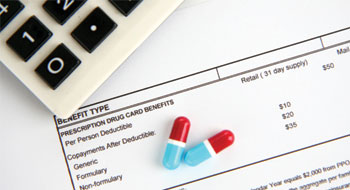
Originally from our sister publication, SmallBizAdvisor.ca.
The Ontario government’s Trillium Drug Program (TDP) can help employers reduce their drug plan costs even more than previously thought.
At a recent CGIB seminar in Markham, Ont., a group of more than 75 industry insiders learned surprising details about how the program works that has serious implications for small businesses in Ontario struggling with drug costs.
Read more: The Trillium Drug Program: Ontario’s best-kept secret
The crux of the confusion was about how TDP and employer-sponsored plans work together and just how much of a claim is paid by the employer when the employee is a recipient of the TDP.
For smaller employers, the TDP program is a way to reduce some of their drug plan costs. The program only covers drugs that are listed on the Ontario Drug Benefit (ODB) formulary. By informing employees that the program exists and encouraging them to enroll when necessary, an employer’s drug costs may be reduced because the Ontario government pays for some of the more expensive drugs employees need.
The seminar presenter, Doug Whitefield, exceptional access program branch, Ontario Ministry of Health and Long-Term Care, first explained that the program is open to any Ontario resident with high prescription drug costs that has a valid health card. The only people not eligible are recipients of the ODB program.
Next, he said, once an employee applies, they are given a deductible at a set amount that is calculated based on his or her net household income and household size. How this deductible is paid determines how much of the drug cost will end up on the employer’s drug plan.
The deductible is paid in four installments over the year when the employee goes to their pharmacist to purchase their drugs. For example, an employee with an annual deductible of $500 will pay for the first $125 of prescriptions purchased at the start of each quarter on August 1, November 1, February 1 and May 1. After the deductible is paid in each quarter, the employee is eligible to receive 100% covered drug benefits for that quarter from the government. Any unpaid deductible in a quarter will be added to the next quarter’s deductible.
So if an employee enrolled in TDP requires $2000 for drug treatments each quarter and their employer-sponsored plan covers 80%, then each quarter she is paying $400. Assuming this employee has an annual deductible of $500—which means a quarterly installment of $125—once she has paid her deductible installment out of her own pocket, the TDP can kick in and pick up 100% of the costs. The employer stops paying in that quarter if the employee switches from their insurer card to their health card for each subsequent purchase in that quarter. When the next quarter begins, the employee and the employer will again be first payer until the employee reaches her deductible quarterly installment, said Whitefield.
Many of the attendees at the seminar were surprised by the 100% TDP coverage element of the program. There was significant confusion in the room around how drug claim payments are adjudicated in conjunction with TDP when an employer plan is also a payer.
Whitefield reiterated that “once the deductible is met in each quarter, the TDP program can pick up 100% of the cost of the eligible drug.” This means that an eligible drug claim for an employee enrolled in the program can be paid for in three different ways. First, it can be covered by the employer plan. Second, it can be paid as a combination of the employer plan and the TDP or, third, entirely by the TDP once the deductible is met and if the employee is using the proper payment card (a valid health card) at time of purchase.
Ultimately, for an employer, this means the potential to further reduce drug costs. The challenge for employers is that they cannot identify which employees need the TDP program because of current privacy legislation.
Therefore, whole employee groups need to be educated about the TDP program and then, once enrolled, taught to switch from their private insurance drug cards to their Ontario health cards once they reach their TDP deductible installment.
But, if an employer can save $50,000 on their plan, the cost of educating employees will be worth the time investment.
Visit the Trillum Drug Program online for more information or call 1-800-575-5386.
